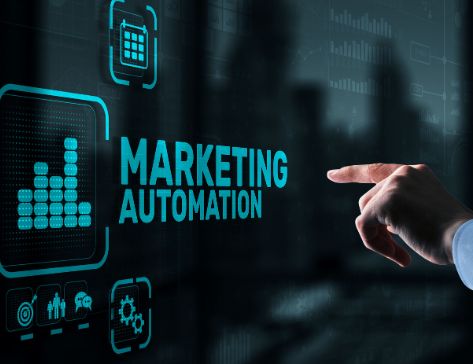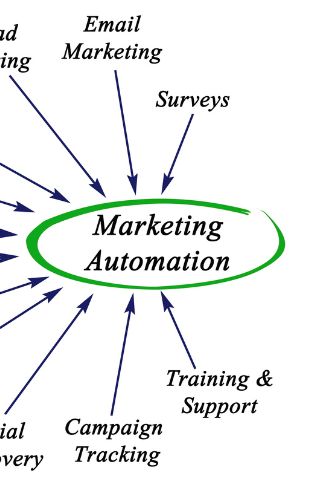
Choosing Wisely: The Top Marketing Automation Tools for 2025 Reviewed
Selecting from the Top Marketing Automation Tools 2025 is a critical decision for any business looking to scale its marketing efforts, enhance customer engagement, and drive revenue growth efficiently. As technology evolves at breakneck speed, particularly with advancements in Artificial Intelligence (AI) and data analytics, marketing automation platforms are becoming more sophisticated, offering capabilities that go far beyond simple email scheduling. These tools are now central hubs for managing customer interactions across multiple channels, personalizing experiences at scale, and providing deep insights into campaign performance and customer behavior.

Why Invest in Marketing Automation in 2025?
The core value proposition of marketing automation remains strong: doing more with less. By automating repetitive tasks like email sequences, social media posting, and lead nurturing workflows, these platforms free up valuable time for marketing teams to focus on strategy, creativity, and higher-level analysis. Key benefits include improved lead generation and nurturing, enhanced personalization leading to better customer experiences, increased operational efficiency, better alignment between marketing and sales teams, and robust reporting capabilities that demonstrate marketing ROI. The landscape of available marketing automation software is vast, making careful selection crucial to realizing these benefits fully.
What is Marketing Automation, Really?
At its heart, marketing automation refers to software platforms and technologies designed to streamline, automate, and measure marketing tasks and workflows.
This allows businesses to manage marketing processes across multiple channels – such as email, social media, websites, and SMS – automatically. The goal is to nurture leads with personalized, useful content, helping to convert leads to customers and turn customers into delighted advocates. Modern platforms often integrate closely with Customer Relationship Management (CRM) systems, providing a seamless flow of information between marketing and sales.
Key Features Defining the Top Platforms in 2025
As you evaluate options, look for platforms excelling in these key areas, reflecting the demands of modern marketing and the importance of a data-first marketing strategy:
- AI-Powered Capabilities: Predictive lead scoring, AI-driven content recommendations, automated segmentation, send time optimization, and generative AI assistance for creating copy or subject lines are becoming standard.
- Advanced Segmentation & Personalization: Ability to segment audiences based on complex behavioral, demographic, and transactional data, enabling hyper-personalized messaging and dynamic content.
- Omnichannel Campaign Management: Tools to orchestrate campaigns seamlessly across email, SMS, social media, web push notifications, in-app messages, and potentially direct mail or advertising channels.
- Robust Analytics & Reporting: Customizable dashboards, detailed campaign performance tracking, attribution modeling (first-touch, last-touch, multi-touch), and ROI analysis.
- Deep CRM Integration: Seamless, bi-directional sync with major CRM platforms (especially Salesforce, HubSpot CRM, Microsoft Dynamics) is crucial for sales and marketing alignment.
- User-Friendly Workflow Builder: An intuitive visual interface for creating complex automation rules and customer journeys without requiring extensive coding knowledge.
- Scalability & Flexible Pricing: The platform should be able to grow with your business, offering different tiers and pricing models (often based on contact list size or feature sets).
Reviewing the Top Marketing Automation Tools for 2025
Based on features, usability, integration capabilities, market presence, and relevance for 2025’s marketing landscape, here are some of the leading contenders:
1. HubSpot Marketing Hub
HubSpot remains a dominant force, particularly strong for SMBs and mid-market companies, offering an all-in-one platform tightly integrated with its popular free CRM. Its ease of use is a major selling point.
- Pros: Excellent usability, powerful free CRM, comprehensive feature set (email, landing pages, social, ads, SEO, blogging), strong reporting, growing AI features (content assistant, predictive scoring).
- Cons: Can become expensive as contact lists grow and higher tiers are needed, some advanced features less robust than specialized enterprise tools.
Best For: SMBs, Mid-Market companies, businesses prioritizing ease of use and an integrated CRM/Marketing platform.
Pricing Context: Starts with free tools, paid plans scale significantly based on features and contacts.
2. Salesforce Marketing Cloud Account Engagement (formerly Pardot)
Tailored primarily for B2B marketers already invested in the Salesforce ecosystem, Pardot offers deep integration and powerful automation capabilities focused on longer sales cycles.
- Pros: Unmatched Salesforce CRM integration, robust B2B features (lead scoring, grading, nurturing), powerful analytics (B2B Marketing Analytics), AI capabilities via Salesforce Einstein.
- Cons: Steeper learning curve, higher price point, primarily designed for Salesforce users.
Best For: B2B companies heavily using Salesforce CRM, larger organizations needing sophisticated lead management.
Pricing Context: Premium pricing, typically suited for mid-market to enterprise.
3. ActiveCampaign
ActiveCampaign strikes a balance between advanced automation capabilities and affordability, making it a favorite among SMBs who need more power than basic email marketing tools offer. It also includes built-in CRM features.
- Pros: Highly flexible and powerful automation builder, strong email marketing features, integrated CRM, good segmentation options, competitive pricing, machine learning features (predictive sending).
- Cons: Interface can feel cluttered for some users, reporting could be more advanced in lower tiers.
Best For: SMBs needing sophisticated automation and CRM features without an enterprise price tag.
Pricing Context: Competitive pricing, scales based on contacts and features.
4. Klaviyo
Klaviyo has carved out a strong niche in the e-commerce space, offering deep integrations with platforms like Shopify, Magento, and BigCommerce. Its focus is on leveraging customer data for personalized e-commerce marketing.
- Pros: Excellent e-commerce focus, deep data integration, powerful segmentation based on purchase behavior, pre-built e-commerce automations, strong SMS marketing features.
- Cons: Less suited for non-e-commerce businesses (e.g., B2B, SaaS), pricing can scale quickly with list size.
Best For: E-commerce businesses of all sizes.
Pricing Context: Free tier available, paid plans based on contact/email volume.
5. GetResponse
GetResponse offers a broad suite of marketing tools beyond just automation, including webinar hosting, conversion funnels, and website building features, often at a very competitive price point.
- Pros: Affordable entry point, wide range of features (email, automation, webinars, landing pages, funnels), user-friendly interface, AI email generator.
- Cons: Automation capabilities might be less sophisticated than ActiveCampaign or HubSpot at higher levels, CRM features are basic.
Best For: SMBs, entrepreneurs, creators, businesses looking for an all-in-one platform on a budget.
Pricing Context: Very competitive, especially at lower tiers.
6. Marketo Engage (Adobe)
A true enterprise-level powerhouse, Marketo (now part of Adobe Experience Cloud) offers deep customization, extensive features, and powerful analytics for large, complex marketing operations.
- Pros: Highly scalable and customizable, comprehensive feature set for complex B2B/B2C marketing, advanced analytics and attribution, strong integration capabilities (especially within Adobe ecosystem).
- Cons: Very high cost, significant complexity and steep learning curve, requires dedicated resources to manage effectively.
Best For: Large enterprises with complex marketing needs and dedicated marketing operations teams.
Pricing Context: High-end enterprise pricing.
How to Choose the Right Tool for Your Business
Selecting the best fit from the top marketing automation tools 2025 requires careful consideration:
- Define Your Needs & Goals: What specific problems are you trying to solve? (e.g., lead nurturing, personalization, reporting). What are your key marketing objectives?
- Assess Your Budget: Determine a realistic budget, considering that costs often scale with contact list size and feature requirements.
- Evaluate Team Expertise: How tech-savvy is your team? Choose a tool with a learning curve that matches your team’s capabilities or your willingness to invest in training.
- Check Integration Requirements: Does the tool integrate seamlessly with your existing CRM, e-commerce platform, website CMS, and other critical software?
- Utilize Free Trials & Demos: Take advantage of trial periods or request personalized demos to get hands-on experience with the interface and features.
- Read Reviews & Case Studies: Look for feedback from businesses similar to yours in size and industry.
- Consider Scalability: Will the platform support your business as it grows over the next few years?
“The goal of marketing automation is not just to automate, but to create more human and personalized experiences at scale.” – Marketing Thought Leader
Conclusion: Automating for a Smarter Future
The landscape of the Top Marketing Automation Tools 2025 is dynamic, driven by AI innovation and the increasing need for data-driven personalization across all customer touchpoints. Choosing the right platform is a strategic investment that can significantly impact marketing efficiency, effectiveness, and ROI. Whether you’re an SMB seeking ease of use like HubSpot or ActiveCampaign, an e-commerce store leveraging Klaviyo, or a large enterprise needing the power of Marketo or Salesforce Marketing Cloud Account Engagement, the key is to align the tool’s capabilities with your specific business goals, budget, and technical resources. Properly implemented, marketing automation allows teams to manage complex campaigns efficiently, including diverse strategies like pop advertising when integrated appropriately, ultimately freeing up marketers to focus on the strategic thinking and creativity that truly drive growth.


